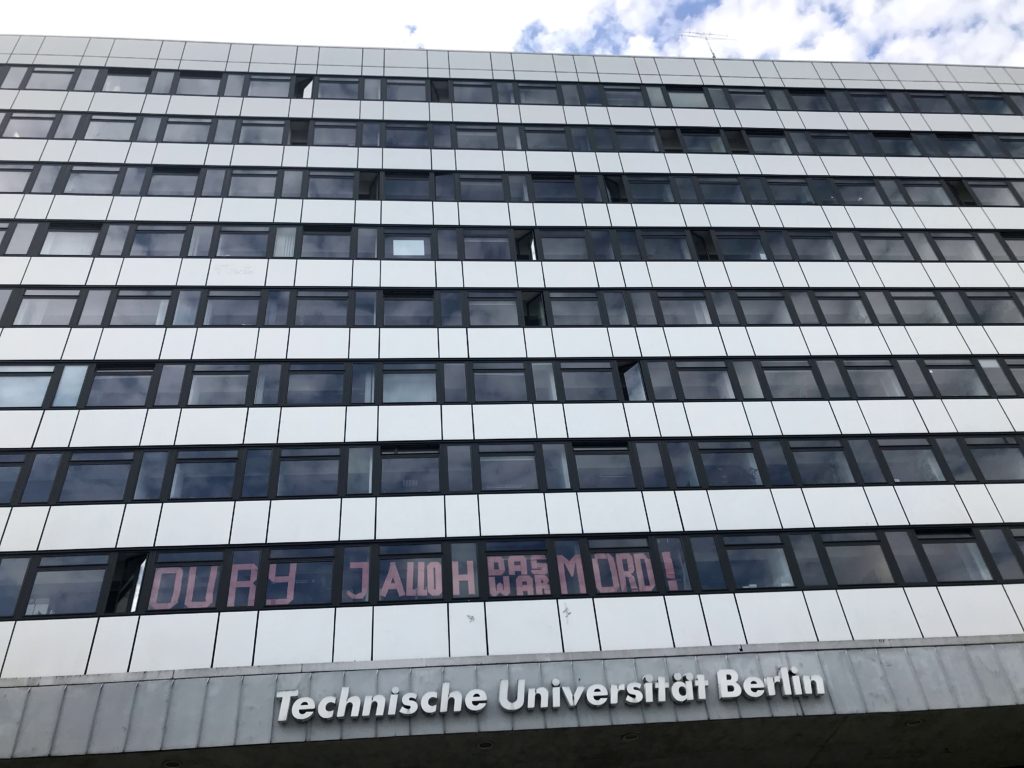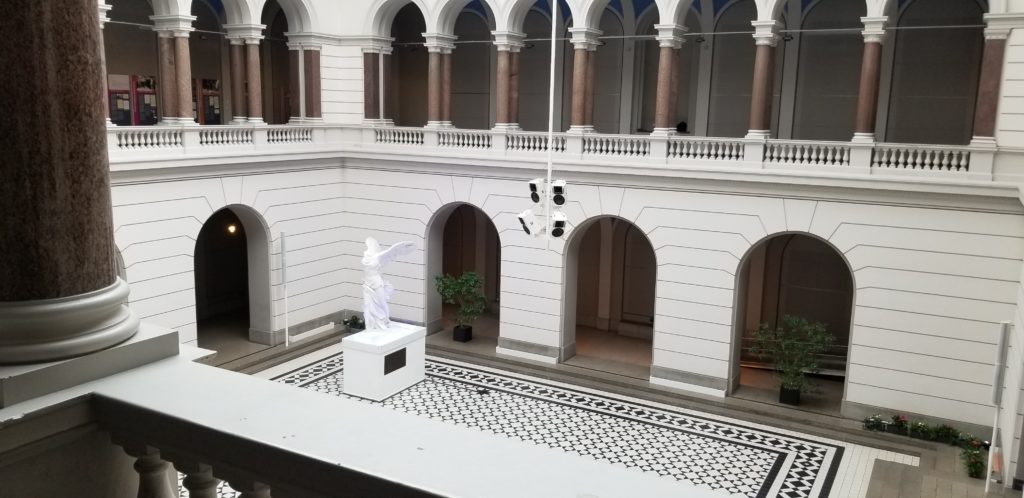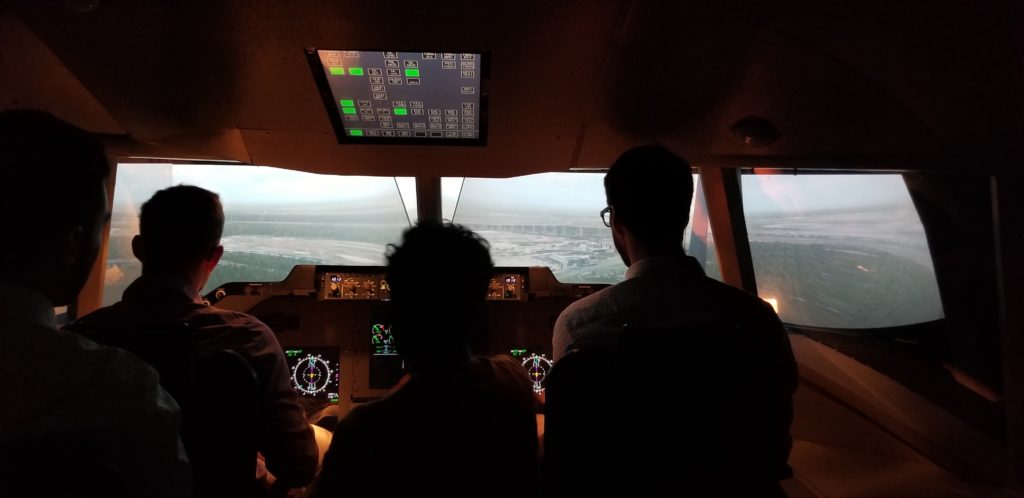After two weeks of industrial visits, we ended the mission with a visit to the Technical University of Berlin. Upon arrival, we were greeted by the head of international exchange programs. So we started with a short tour of the campus. From the outside, the building looks very modern.

Once inside, We were pleasantly surprised by the beauty of classical architecture. In fact, the building dates back to 1879 and was reopened after the Second World War in 1946.

Then we moved on to a room that looks like an amphitheatre that is used mainly for lectures. This room has a capacity of more than 1000 students. Which is very different from the small North American class. After the campus visit, we travelled to meet Mrs. Anke Heymann.
A professor from the aeronautics department came to join us. He gave us a short presentation on TUB. Indeed, TUB is one of the oldest and largest universities in Germany. It has almost 35,000 students, 8,362 employees and 355 professors. In this university, there are 7 departments: Humanitarian Sciences, Mathematics and Natural Sciences, Process Sciences, Electrical Engineering, Computer Engineering, Mechanical Engineering and Transport Systems, Environmental Plants and Economics and Management.
Afterwards, we headed to the aeronautics laboratory where the students make their own aircraft with dimensions ranging from 20 to 60 metres. They are required to carry out dynamic and statistical tests to get an idea of the aircraft’s lifespan. In the same laboratory, a section is devoted to aerodynamics. We saw small wind tunnels that students use to design aircraft engine blades. They can insert small parts of blades and take measurements on the speed of the air around them.
Still focusing on aeronautics, the team headed to the flight simulation laboratory. Each member was able to, in a way, land his own plane at Toulouse airport. Although very fun, these simulators allow students to safely integrate new flight systems into aircraft.

Finally, the visit of TUB ended with a presentation on the laboratory that creates its own micro-satellites. It was interesting because at the beginning of the mission, we also had a presentation on micro-satellites, but at the Technical University of Munich. We found that at TUB, the program has been around longer and they have a lot of money (500,000 euros).
The university seems very interesting, as does the city of Berlin. That’s why ÉTS is currently working to create a partnership so that more students can experience Berlin through a study abroad session.